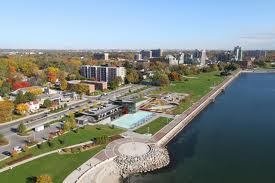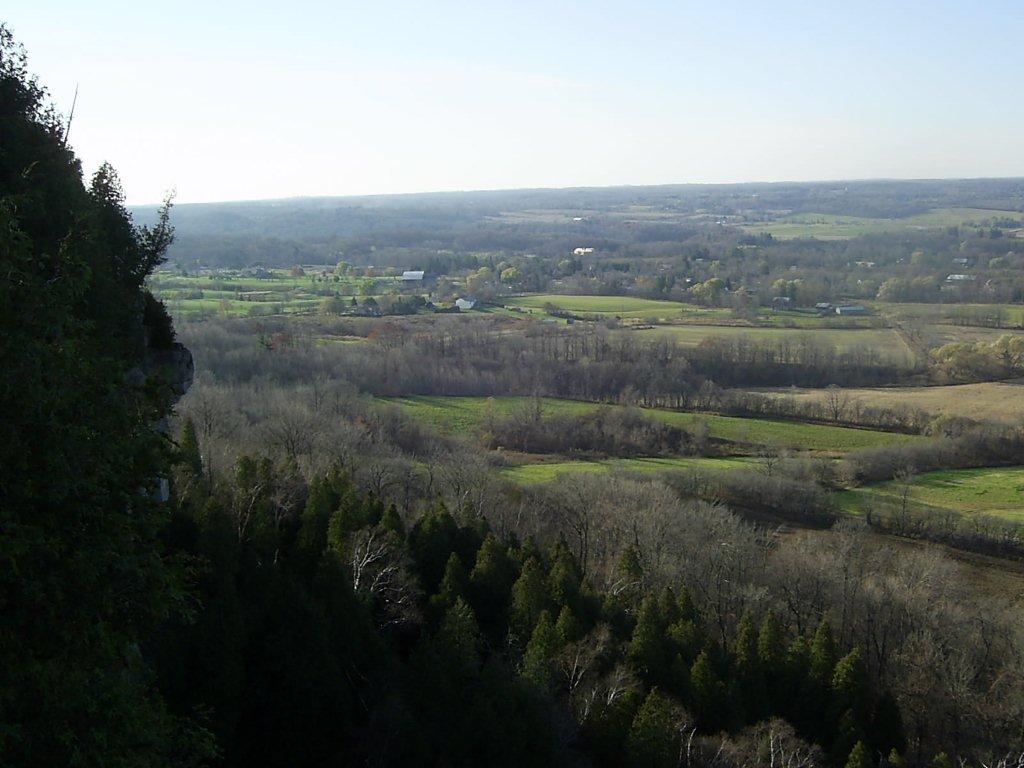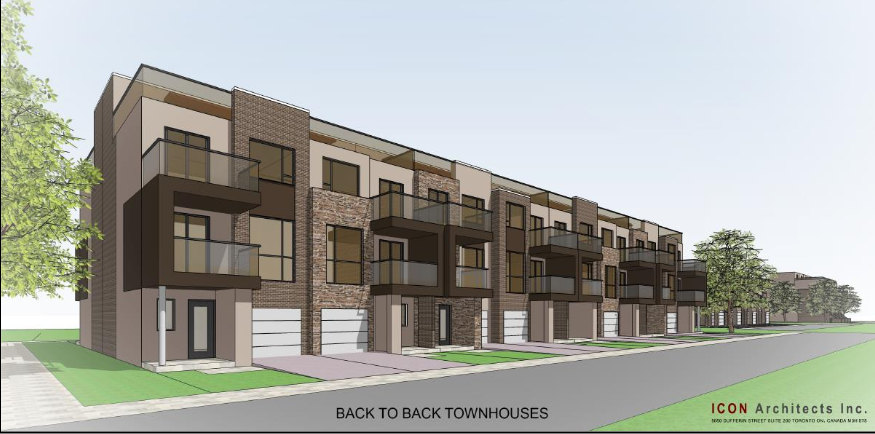 By Kimberly Calderbank
By Kimberly Calderbank
September 15th, 2018
BURLINGTON, ON
Burlington is a vibrant city. We have a beautiful waterfront, scenic parks, safe neighbourhoods, great schools, access to some of Ontario’s top festivals and events, and successful businesses. Unfortunately, what makes Burlington such a desirable place to live also makes it expensive. We have seen house prices and rents skyrocket in recent years to the point of making our city un-affordable, especially for first-time home buyers, newcomers to Canada, young families, and seniors.

Spencer Smith Park – there was a time when it was weed filled space. It took foresight and community involvement to get this park to where it is today.
Right now, the average price of a detached house in Burlington is about $1 million, up 13 percent over this time last year. The average price of a town home is $578,000, up 6 percent from last year. The average price of a 2-bedroom condo is $434,000 which is actually down 5 percent which could possibly be attributed to a recent increase in supply.
What exactly is the definition of affordable housing? One figure often used by Councillors and city staff when referring to “affordable” units in new developments is about $362,000, but this definition is rather meaningless, because for someone with a family income of about $50,000, the affordability threshold is almost half that. A more reliable definition of affordable housing is housing with a market price (for purchase or rent) that is affordable to households of low and moderate income, spending no more than 30 percent of their gross household income on housing, without government assistance.
For a household of three or more people with a gross family income of about $130,000, the maximum purchase price for a home considered to be affordable would be $456,000 (based on a maximum monthly home ownership cost of about $3,300). As residents of Burlington, you and I both know that you can’t buy many family homes here for that price, and a detached house under $500,000 would be hard to find.
A significant challenge to Burlington’s housing affordability is that we are running out of property on which to build new subdivisions with detached houses while maintaining and protecting our agricultural areas.

Half of the city’s land mass is the Escarpment where other than three settlement areas residential development is not permitted.
Municipal, regional, and provincial policies, such as land use policies set out in Official Plans, help ensure an adequate range and mix of housing for complete and healthy communities while fulfilling the provincial mandate to “grow in place”. These policies can also provide us with some tools to address affordability.
One tool municipalities could decide to use is inclusionary zoning. This enables cities to set out guidelines for affordable housing units to be built in residential developments of 10 units or more. Another policy tool is Section 37 of the Planning Act. If a property owner wishes to build something that does not comply with zoning regulations, such as height and/or density limits, the owner may voluntarily agree to provide “community benefits” in exchange for approval—benefits negotiated by councilors and planning staff. Lately, it seems there hasn’t been enough thought put into exactly which types of benefits would be as valuable to the Community as the extra height/density is to builders.
For example, a recent community benefit listed for one of the development proposals at Brant and James took the form of discounts on condo units. Considering the high price of units, a $50,000 discount would unlikely make a dent in affordability. We can do better than that. How about allocating Section 37 funds to Halton Region to be used for the provision affordable housing or to go towards the building of purpose-built rental housing?
We have a huge opportunity here to collaborate and negotiate with builders and grassroots, community-led organizations such as the Halton Community Benefits Network, in consultation with residents, to determine which community benefits are most needed. Our councilor should be consulting with residents before these proposals even come to the table, not after, to determine community priorities.
At election time, candidates will tell you that we have been growing too fast and over developing. However, regional housing stats prove otherwise. In 2017, only 594 new units were added in the entire city of Burlington—a low number compared to Oakville which added about 2300 new units, and Milton which added over 1100. In addition to the tens of thousands of detached homes we already have in Burlington, we’ll need to add more apartments, condos, and town homes.

A proposed back to back townhouse development.
A denser urban area does not necessarily mean less expensive housing but very often, it can. Increasing the supply of homes for purchase and for rent while providing a wide range of housing options are both essential to affordability. Town homes are especially needed in Burlington as a more affordable housing option (both for purchase and for rent) for families. Only 2.2 percent of new builds in 2017 were town homes, while nearly 87 percent were apartment/condo-type units. We will need to shift this balance if we’re serious about attracting more young families to Burlington.
Burlington is growing from a suburban to an urban Community. As much as we’d like things to stay the same, we must consider the needs of all members of our community, now, and in the future. The challenge of managing and sustaining our city’s rapid growth is also an opportunity to improve the quality of life for many residents, especially in terms of affordability. Let’s continue to attract new residents to our welcoming, vibrant, and inclusive community with diverse neighbourhoods and affordable housing options for everyone who would like to call Burlington home.
 Kimberly Calderbank is a candidate for the Ward 2 city council seat. She is one of ten people seeking the job.
Kimberly Calderbank is a candidate for the Ward 2 city council seat. She is one of ten people seeking the job.



















Kimberly,
Stop fooling yourself and, as such, trying to fool others. Burlington will never have affordable housing as a part of the real city and real private marketplace.
Your article clearly showed the economics and financial numbers showing this. The rest of your text on this subject is fallacy.
You are begging the question, using a circular argument that still assumes that the possibility of general affordable housing in Burlington is true, despite having shown that it is not possible.
So look up what you are doing here – begging the question.
No amount of developer bonuses or housing subsidy via taxpayer charity, will ever make Burlington an affordable community. So get serious, and stop listening to developers.
I would never vote for someone so apparently uninformed about real estate history and reality, and who appears to be naive to vested interest influence.
I am as yet an undecided voter, however my choice will be one of the candidates who does NOT have signs on developers’ property.
This opinion piece really fails to address the core concerns of Ward 2 residents, which is over intensification well beyond the provincial growth targets, congestion and lack of green space brought about by over intensification.
The affordability issue is one that is often promoted by the development industry to support growth and intensification, very simply more units will equal more affordable housing. This is flawed, one just has to look at Toronto, Mississauga and Vancouver. Explosive growth in condo’s has not resulted in affordable housing. Why? Developers are smart business people, they set price points, margins etc for their product. As an industry they are not going to oversupply a market, depress price and impact their margins. The price of housing is determined by location, size, condition and supply and demand and features and benefits to the buyer; and as any realtor will tell you location, location, location. Many of the mechanisms stated in this opinion piece are already being applied, nothing new here. We can all debate if the city is doing a good job of obtaining benefits, many in Ward 2 would not agree that we are. Councilor Meed Ward has raised countless motions to gain better benefits only to be voted down by the old boys club in City Hall.
It is very difficult for government to control or manage price aside from offering subsidies or tax incentives or adjusting interest rates, it does not work for oil, steel, corn, grain,etc. so why would we think government can control/manage the price of housing.
The statistics quoted on growth in Burlington relative to Oakville and Milton is completely out of context and misleading. These statistics need to be shown as a ratio of develop-able land areas or as a ratio of available units for development. Both Oakville and Milton have much more land available for development than Burlington and consequently will show more units built in a given time frame.
The key issue in Ward 2 is over intensification, it’s almost comical that your opinion piece show a rendering of a 2 story town house when many of us our out raged about 20+ story towers going up with lack of infrastructure and planning to support this. This level of intensification will drive densities 50% higher than the targets set out in the province’s 2017 Growth Plant for the Greater Golden Horseshoe! Well above anything imagined by the planners at Municipal Affairs for a city like Burlington.
The majority of the ward believes this candidate is aligned with the development industry, it is obvious from the locations of candidate Calderbank’s signs; and also aligned with the old boys club in City Hall as others noted.
It’s a nice opinion piece but I’m sure fails to resonate with many of the voters in Ward 2.
Sorry but there’s a huge disconnect in this article that is hard to reconcile.
Ms. Calderbank doesn’t think we have enough townhouse developments. However, the City keeps telling us we have to grow up, not out. That same Planning Department condones developers building premium high rise developments that cater to high-end wage earners or empty-nesters, not young families with children. Those developments, by their very nature, contain amenities and features that dramatically escalate the costs of home ownership. Even the infill townhouse developments that Adi is currently building in east Burlington goes for $1.3 million per unit. That hardly meets the definition of affordability.
How does Ms. Calderbank propose to transform the existing housing mix to provide for more townhouses? How is she going to persuade existing developers to build townhouse developments that are affordable? If you can’t develop on protected Escarpment lands, and the developers are only interested in building highrise developments because, as we are repeatedly told, they need to “break even”, then where? Established neighbourhoods? Industrial lands? Commercial properties?
Affordability is a real concern, but it also needs new and viable solutions and a municipal government that takes active ownership of the problem. One option that warrants serious and long overdue consideration is cooperative housing. That’s probably considered heresy amongst those in the real estate development industry, but maybe it’s time to stop letting the tail wag the dog. By the same token, maybe it’s also time we started electing politicians with vision who see their role on Council as being something other than a maitre d’ or mouthpieces for developers.
I will not be voting for Calderbank. Her launch event included Craven and Sharman, the two councillors most aligned with developers and the most vocal for transforming the downtown into a sea of highrises. Her event also included the representative from Carriage Gate, the developer for the 23 storey building approved by council, across from city hall.
She has signs on developers’ properties, including, inappropriately, those with an active application that nearby residents are very concerned about.
Democracy is good, when we have distinct choices. There are some who subscribe to the Grow Bold agenda, and will vote for Calderbank. The rest of us will choose otherwise.
The company you keep often speaks louder than the words you speak (if they are actually your words). Thanks for this William. Citizens will read and understand.
We lived in Burlington for many years, loved the city but housing was very expensive and we moved to Niagara for larger lots and affordable housing, though we lobrd Burlington.
Maybe it’s the sign of the times but housing is expensive in Burlington.
Still go to Burlington all the time for festivals and activities, but just couldn’t afford to stay darrylw71@gmail.com
This is an excellent approach and a reasonable path forward. The city’s housing affordability crisis acts as a fundamental limit on our future progress. The talent needed to fuel our economy can no longer afford to comfortably live here. Kimberly I’m glad you are going to take this seriously. You have my vote!
Good article makes sense and it speaks to me. Sorry you are not in my ward.